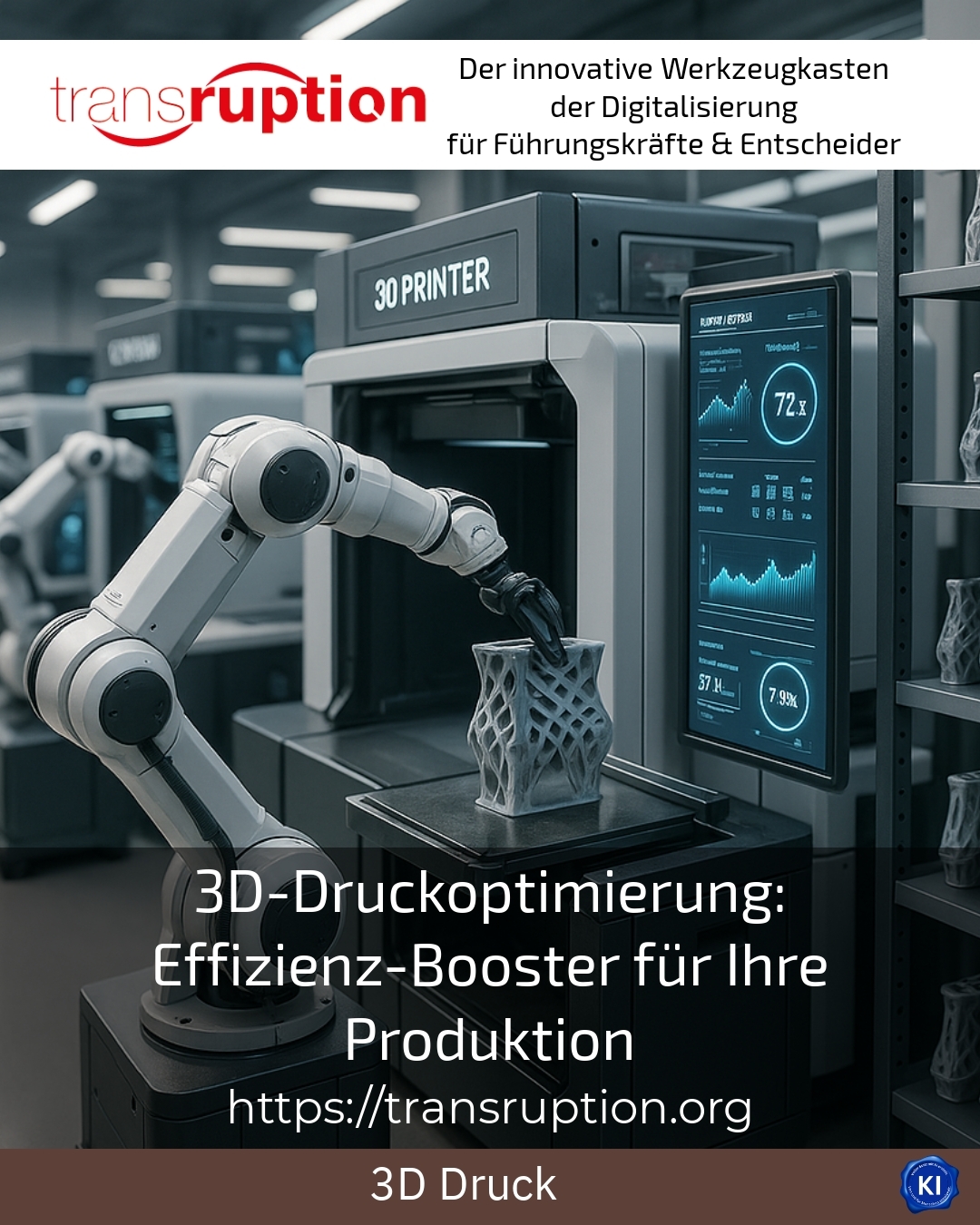3D printing optimisation is an effective efficiency booster in modern production. Companies utilise targeted measures to make manufacturing processes better, more cost-effective and more sustainable. In addition to the technology, clever design adaptations and material selection also play a key role. Such optimisations are becoming increasingly important, particularly in sectors such as mechanical engineering, electronics and aviation.
How 3D printing optimisation makes production more efficient
The integration of intelligent 3D printing optimisation has a direct impact on several production factors. It ensures a noticeable reduction in material consumption, minimises production times and makes it easier to adapt components to specific requirements. Prototypes can be iterated more quickly and even small series can be realised more economically.
In mechanical engineering, examples show how the targeted use of internal lattice structures can significantly reduce the weight of components without compromising stability. This leads to lower energy consumption in drives and reduces operating costs. One manufacturer, for example, effectively adapted its machine inserts with optimised pressure parameters and achieved a 30 per cent material saving as a result.
Companies in the medical technology sector are also relying on these optimisations by producing custom-fit implants with organic-looking structures that are lighter and yet resilient. This reduces the risks of surgery and at the same time supports individualised patient care.
Electronics manufacturers save valuable time when prototyping housings with the help of 3D printing optimisation. Different design variants can be quickly tested and adapted in a short space of time, which shortens development cycles and reduces production errors.
3D printing optimisation: Technological approaches and methods
Topology optimisation is a central component of 3D printing optimisation. Components are designed in such a way that material is only used where it is really needed. The result is often complex, lightweight geometries with sophisticated cavities and organic structures.
For example, a manufacturer of aircraft components was able to significantly reduce the weight of its interior fittings by optimising the topology. This reduces fuel consumption and increases energy efficiency. In automotive engineering, too, this method allows components to be manufactured with maximum stability and minimum use of materials.
Another practical aspect is the use of special infill structures such as the so-called gyroid infill. This pattern increases the strength of the components and saves material at the same time. This has a very positive effect on production costs, especially with expensive materials.
In addition, modern 3D printing software enables iterative adaptation of designs. Production parameters and design data can thus be changed efficiently in order to always find the optimum balance between weight, functionality and production time. This is especially true for dynamic industries where rapid product changes are required.
Practical example:
BEST PRACTICE at the customer (name hidden due to NDA contract) A company from the sports industry reduced the weight of bicycle components by 20 per cent through the targeted use of Gyroid infill in the printing parameters. At the same time, stability improved, which was confirmed in tests. This optimisation led to considerable cost savings for small series.
Practical example:
BEST PRACTICE at the customer (name hidden due to NDA contract) A manufacturer of spare parts for industrial machinery integrated topology optimisation into the development process. By adapting the CAD data to 3D printing, delivery times were reduced by 40 per cent and material costs were cut significantly.
Practical example:
BEST PRACTICE at the customer (name hidden due to NDA contract) A start-up in the furniture industry uses 3D printing optimisation to produce individual furniture fragments with complex designs. The fast and flexible customisation of the components allows the company to test and adapt different variants within a few days, which promotes the innovation process.
Tips for successful 3D print optimisation in your project
The best way to get started with 3D printing optimisation is through a detailed analysis of the manufacturing process. It is advisable to work with specialised consultants who provide impetus and support during implementation. They help to select the optimum materials and optimise designs for efficiency.
The integration of an iterative development cycle also helps to increase efficiency. This involves printing and testing initial prototypes and adapting the design electronically. In this way, companies avoid expensive rework and can react flexibly to market requirements.
It is also important to control production using suitable software solutions and to utilise monitoring systems. This enables continuous optimisation of the printing parameters and helps to keep an eye on quality and costs.
My analysis
3D printing optimisation effectively supports production projects on the path to sustainable efficiency. It not only supports the reduction of material costs, but also shortens development times and improves the functionality of components. Companies from a wide range of industries report significant benefits when they optimise design, material and process holistically. This support results in innovative, stable and resource-saving solutions.
Further links from the text above:
Topology optimisation and 3D printing - how the perfect shape is created
10 application examples where 3D printing service saves money
Topology optimisation for 3D printing
3D print optimisation: How decision-makers can increase their efficiency
For more information and if you have any questions, please contact Contact us or read more blog posts on the topic TRANSRUPTION here.
















